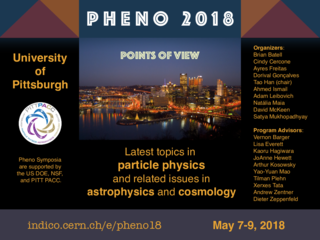Speaker
Description
The critical point for a Higgs sector is here connected to a minimum in the potential for a modulus field. Dynamics of the modulus set the Higgs mass to zero, making Higgs criticality an attractor. An explicit 5-dimensional model for this type of Higgs sector is constructed, where the modulus field is the radion, and Higgs criticality at the minimum of the radion potential is robust under renormalization of the 5D theory due to a sizable critical region in parameter space. In this example, the radion spectrum is gapped, and there are no light particles besides the Higgs, in conflict with expectations from the 4D effective theory, in which the Higgs mass simply looks fine-tuned to zero. The model has an approximately conformal dual where the running of a near-marginal operator drives a scaling dimension towards the complex plane, initiating discrete scale invariance and an instability in the IR, the dual to the AdS tachyon of Breitenlohner and Freedman. The would-be tachyon is stabilized by condensates, terminating the discrete scale invariance precisely at the scale where there is a massless Higgs excitation. There are many parallels to statistical and condensed matter physics models exhibiting so-called "self-organized criticality".

